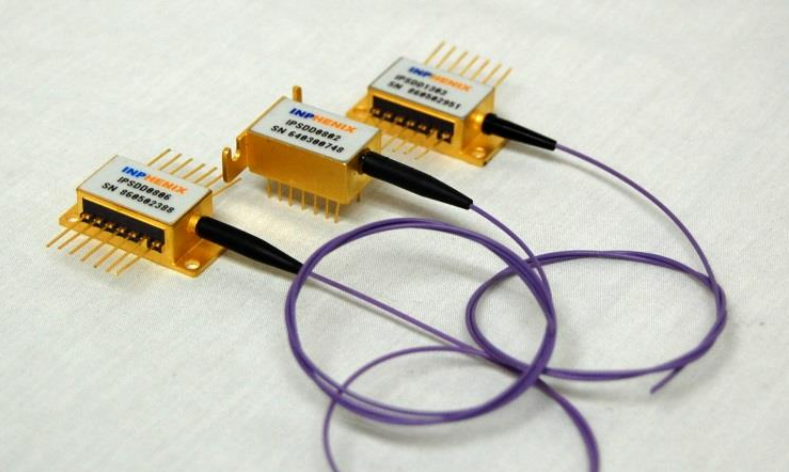
Superluminescent diodes (SLDs) are a type of semiconductor device that emits broad-spectrum light. They have become increasingly popular in various fields due to their unique features and advantages over traditional light sources. This blog post will provide an overview of SLDs and their various applications.

SLDs combine a laser’s properties and a light-emitting diode (LED). They use an optical feedback mechanism to achieve a balance between gain and loss, resulting in amplified spontaneous emission (ASE) that generates broad-spectrum light. This process allows SLDs to emit a wide range of wavelengths, making them suitable for a variety of applications.
SLDs are used in a wide range of applications, including optical coherence tomography (OCT), fiber optic gyroscopes, sensing and measurement, medical devices, and scientific research. Their broad spectral output and high power density make them ideal for these applications where precise, reliable, and efficient light sources are required.
OCT is a non-invasive imaging technique that uses light waves to capture high-resolution, cross-sectional images of tissues and structures beneath the skin. OCT works by measuring the time delay and intensity of light reflected from different layers within the tissue.
SLDs are used as the light source in OCT because they produce broadband light with a high coherence length, which is necessary for producing sharp, detailed images. SLDs also have a high power output, which enables deeper penetration into tissue and faster imaging speeds. Additionally, SLDs have a long lifetime and are highly reliable, which is critical for medical applications where accuracy and consistency are crucial.
Fiber optic gyroscopes (FOGs) are devices that use the interference of light waves to detect rotation. FOGs consist of a coil of fiber optic cable that is wound around a rotating axis. When light from an SLD is transmitted through the fiber optic cable, it is split into two beams that travel in opposite directions around the coil. The rotation of the coil causes a phase difference between the two beams, which can be measured and used to determine the rate and direction of rotation.
SLDs are used in FOGs as the light source because they produce a highly stable and coherent beam of light. This is necessary for accurate measurements because any fluctuations in the light source can cause errors in the measurement of rotation. SLDs also have a long lifetime and are highly reliable, which is important for FOGs used in critical applications such as navigation systems for aircraft, ships, and missiles.
SLDs are used in a variety of sensing and measurement applications, such as in sensors for temperature, pressure, and strain. Their high power and broad spectral output make them ideal for these applications.
SLDs are also used in pressure and strain sensors, where they are used to measure changes in the wavelength or intensity of light as it travels through fiber optic cables. These sensors can detect very small changes in pressure or strain and are used in a variety of applications such as aerospace, civil engineering, and oil and gas industries.
For example, SLDs are used in temperature sensors, where they are incorporated into fiber optic cables that change their optical properties in response to temperature changes. As the temperature changes, the SLD emits light of different wavelengths, which is then detected and analyzed to determine the temperature.
SLDs are also used in medical devices such as endoscopes and photodynamic therapy systems.
Endoscopes are medical instruments that are used to visualize the internal organs and structures of the body. SLDs are used as the light source in endoscopes, where they provide the illumination necessary for the camera to capture high-quality images. The broadband light produced by SLDs can be tuned to specific wavelengths, making it possible to visualize different tissues and structures within the body.
Photodynamic therapy (PDT) is a medical treatment that uses light-activated drugs to destroy cancer cells and other abnormal tissue. SLDs are used in PDT systems to provide the light source necessary to activate the drugs. The high power output and broad spectral output of SLDs make them ideal for this application, where precise and efficient light sources are crucial for effective treatment.
Superluminescent diodes are a versatile and efficient light source that offers unique advantages for various applications. Their broad spectral output, high power density, and reliability make them ideal for medical, scientific, and industrial uses.
Are you looking for high-quality, reliable, and precise SLDs for your application? Inphenix is known for providing high-quality Superluminescent Diodes (SLDs) that are widely used in applications. We are trusted by thousands of customers for offering a broad range of products and excellent customer support. Our reliable products meet the stringent requirements of demanding applications. Inphenix has a team of experienced engineers and technical experts who can provide guidance and support throughout the product selection. Contact us today to discuss this further.
